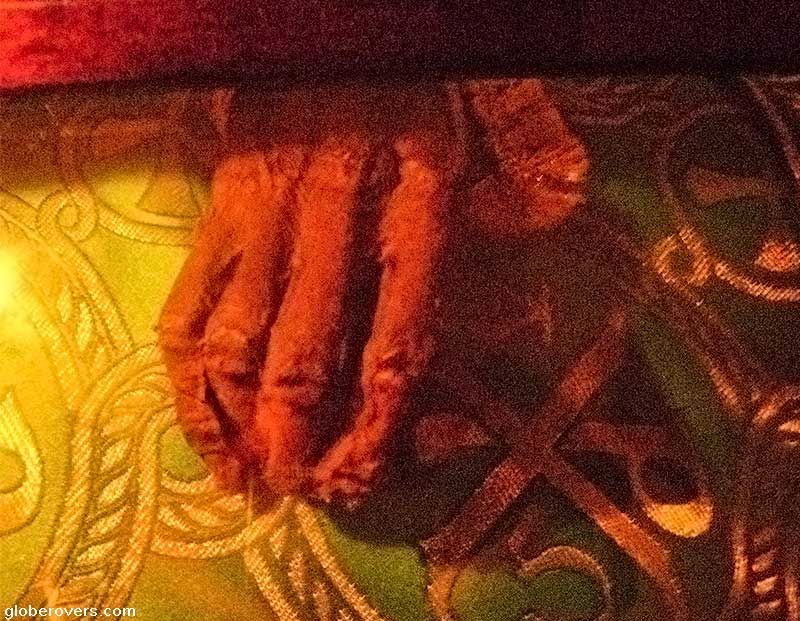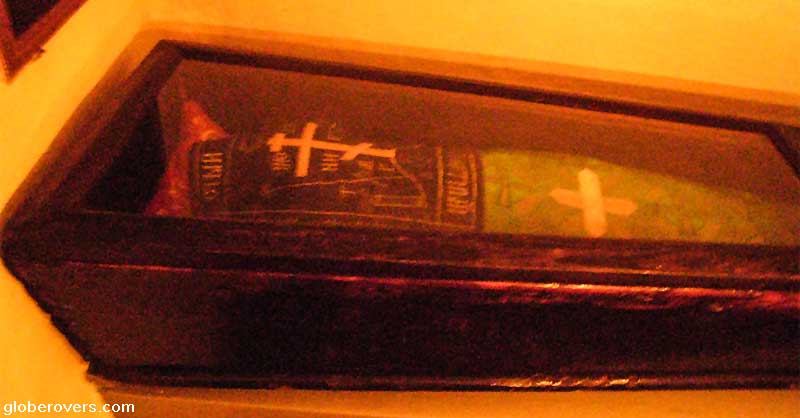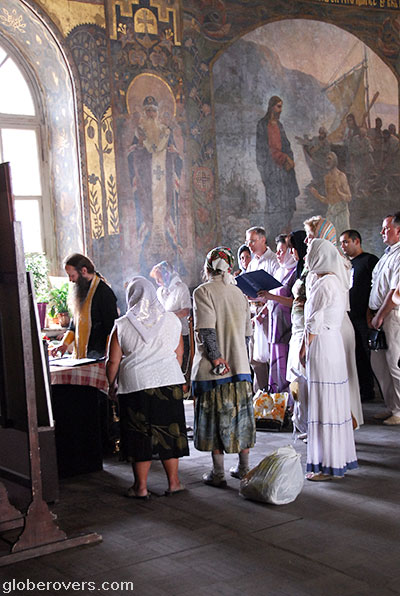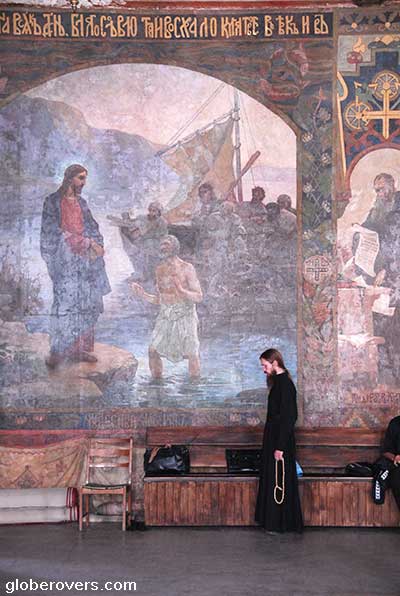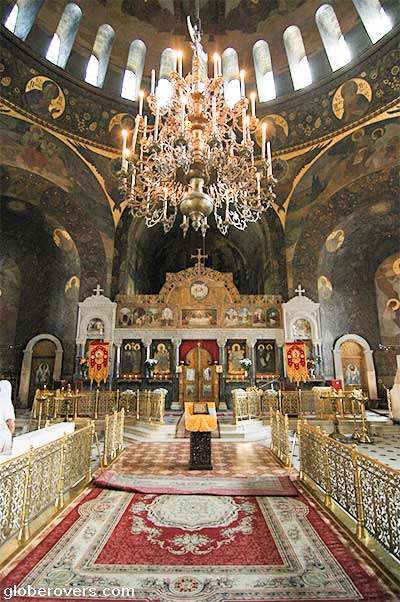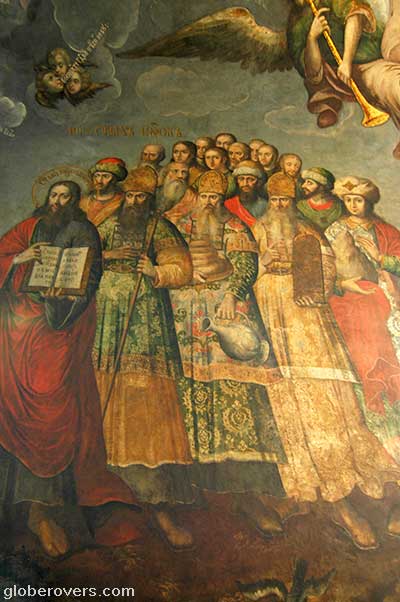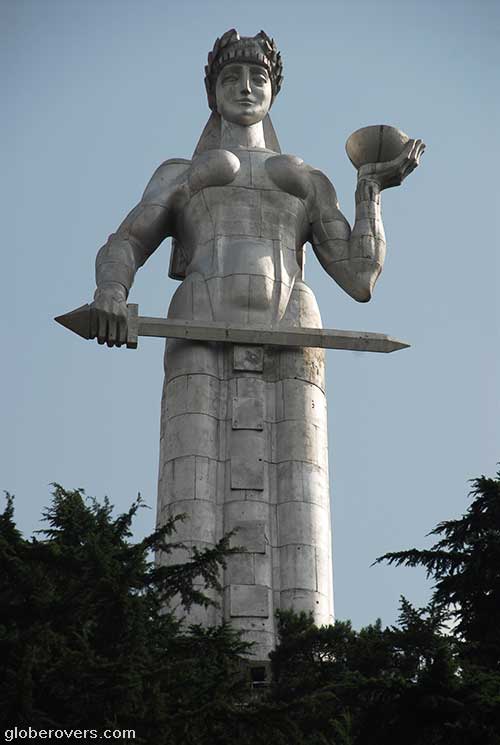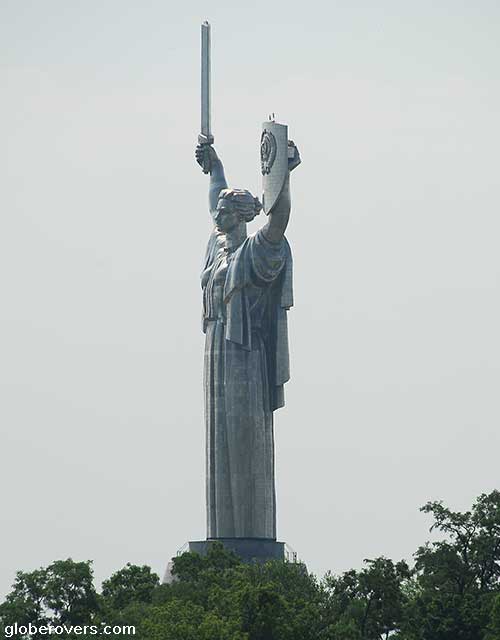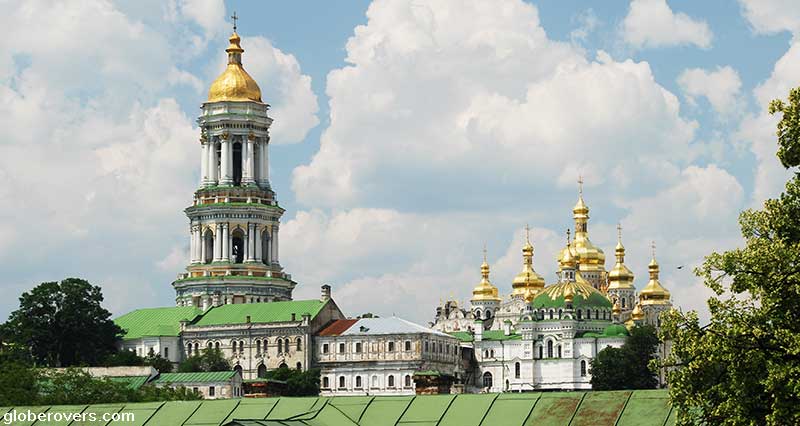
Kyiv (also spelled “Kiev”), is the bustling and scenic capital of Ukraine located along the banks of the Dnipro River.
With a population of almost 3 million people, it draws visitors with its authentic Eastern European charm.
While the flavour in the air is still reminiscent of its less glorious past as part of the Soviet Union, it is slowly on course to integrate within the European Union once it can get through its current turmoil and the violent annexation of Crimea by Russia, and the Russian sanctioned rebellion in the east.
Explore this city with its shining golden domed Orthodox churches and ancient monasteries before it falls prey to mass tourism and Western cultural influences.
Stuffed with historic buildings, strong religious traditions, quiet leafy parks and wide boulevards crisscrossed by narrow cobblestone walkways, this city deserves at least seven days of your time.
Why travel to Kyiv in the Ukraine?
- The low-down: Kyiv has enough sights and experiences to keep an inquisitive traveller busy for several days. Just visiting the cathedral and churches will take at least three days! Add to that the theatre performances, museums, monuments, statues, palaces, large squares, small alleys, parks, and gardens – you need a few weeks in Kyiv!
- The brightest highlight: If you are interested in religion, then you will find Kyiv’s Pechersk Lavra (Cave Monastery) most intriguing.
- Intrepid destination: Kyiv is a large city attracting an increasing number of tourists and travellers, especially in the summer months. Arrive off-season and you will have much of the city for yourself and for the locals.
- Globerovers score (10 is highest): Kyiv is a great city to visit and gets a score of 8/10.
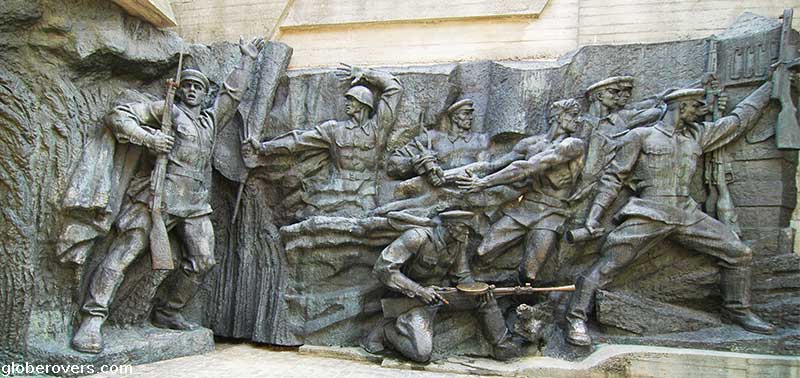
Table of Contents
A brief history of Kyiv
Founded more than 1,500 years ago, the city of Kyiv was destroyed in 1240 by Mongol-Tatar invaders.
Once a powerful force on the European scene, Ukraine’s fate in modern times has been decided in far-away capitals. As a result, modern Ukrainian history, for the most part, has been defined by foreign occupation, most notably by Russia.
Under Soviet rule, Ukraine was the most populous and powerful of the 15 Soviet republics, home to much of the union’s agricultural production, and defence industries – including some of the nuclear arsenal.
Kyiv suffered severely during World War II, and many architectural and art treasures were destroyed. Earlier in the 1930’s the Soviet authorities, mainly under Stalin, systematically destroyed many churches and other places of worship. Even so, Kyiv is one of the historical richest cities in Eastern Europe.
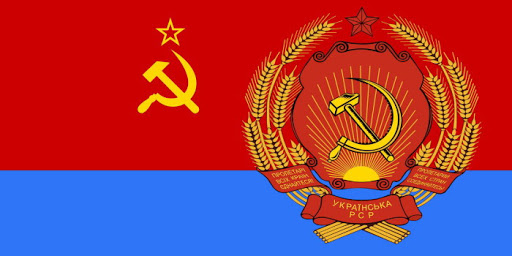
Thousands of Jews were executed in both Kyiv and the western city of Lviv. In April 1986, the nuclear reactor at Chernobyl exploded, a mere 100 km north of Kyiv.
Generally considered the birthplace of the Slavic civilisation, Kyiv was long considered an important provincial capital in both the Tsarist and Soviet eras, which came to a sudden end on August 24, 1991, when Ukraine proclaimed its independence from the former USSR after an aborted coup in Moscow.
The people of Kyiv
Don’t be turned off by unfriendly service workers who may come across as being outwardly rude towards foreigners. The language barrier is not well managed by older people who may often shrug you off rather than make any effort to communicate.
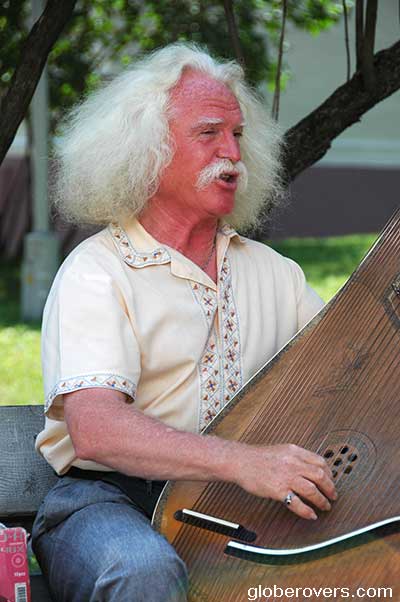
Locals seem to be enjoying their lives full-heartedly. This is a city which is home to some of the most incredibly pleasant and helpful people, not to mention some of whom must be amongst the most beautiful people in the world.
While household incomes are generally low, locals spend a great amount of money on their appearance and wear fashionable clothes. There are no signs of poverty on the streets.
The outskirts of Kyiv offer an insight into life under the USSR with the landscape swallowed up by gloomy apartment blocks.
In summer, many people walk in the streets with a bottle of beer in the hand, as spirits (particularly vodka) are cheap. These people enjoy their lives, particularly during the short summer months. The average tourist will find that a week in Kyiv is not sufficient to completely explore this city.
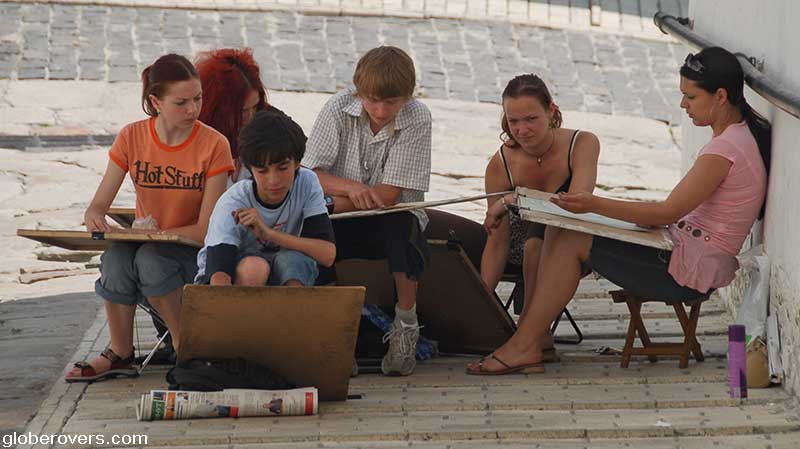

The Khreshchatyk and quaint alleys
Walking the alleys and boulevards in Kyiv is very reminiscent of Russian cities such as Moscow and St. Petersburg – yet the exact similarities are subdued.
Spend a full day, and a few evenings, slowly strolling down Kyiv’s main boulevard – Khreshchatyk Street. This broad avenue is lined with giant trees and grand Stalinist brick buildings. Khreshchatyk is often off-limits to vehicular traffic on weekends at which time it becomes the playground of those who want to see and be seen.
If narrow cobblestone walkways are your fantasy, head for the Andriivsky Descent. This narrow winding street is one of the oldest in Kyiv and is home to many art galleries, artists at work, street art markets, and lazy cafés.
The Dnieper River runs through Kyiv. Nearby parks offer leafy paths and splendid river walks.
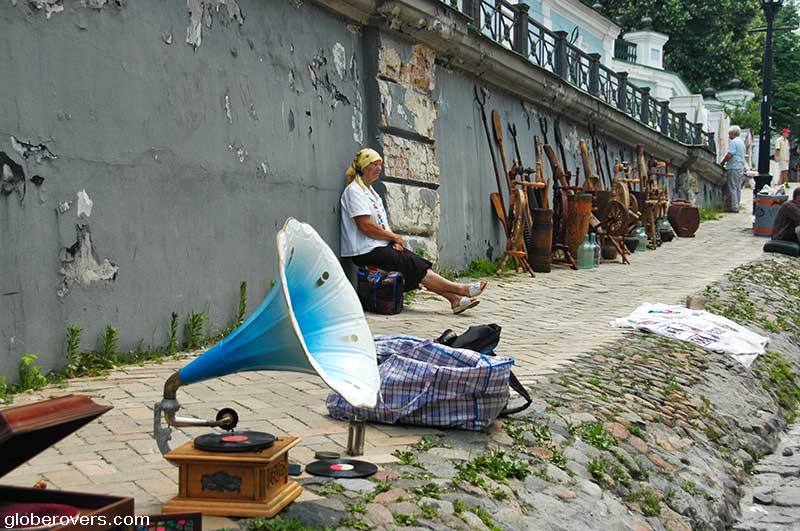
Kyiv’s Pechersk Lavra (Cave Monastery)
For one of the most soulful experiences in your life, start your visit at the sacred pilgrimage site for Orthodox believers – the Kyiv Pechersk Lavra – also known as the Cave Monastery.
Plan to spend a full day in this vast complex of monasteries, cathedrals, and underground catacombs.
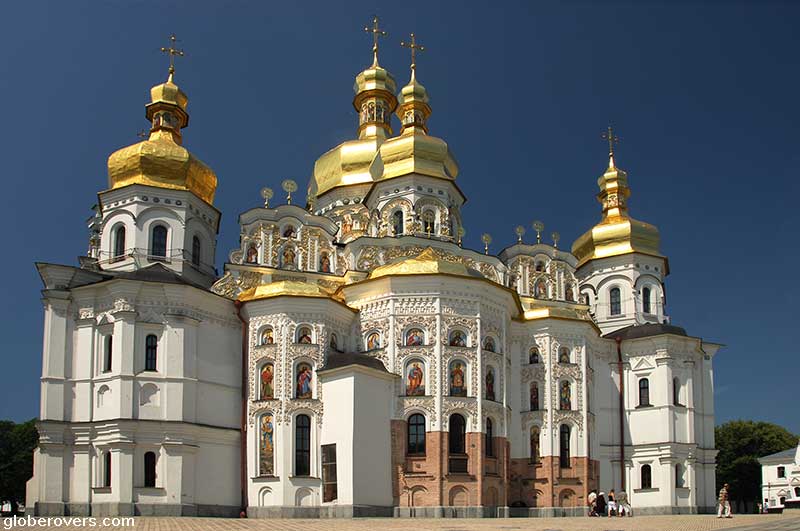

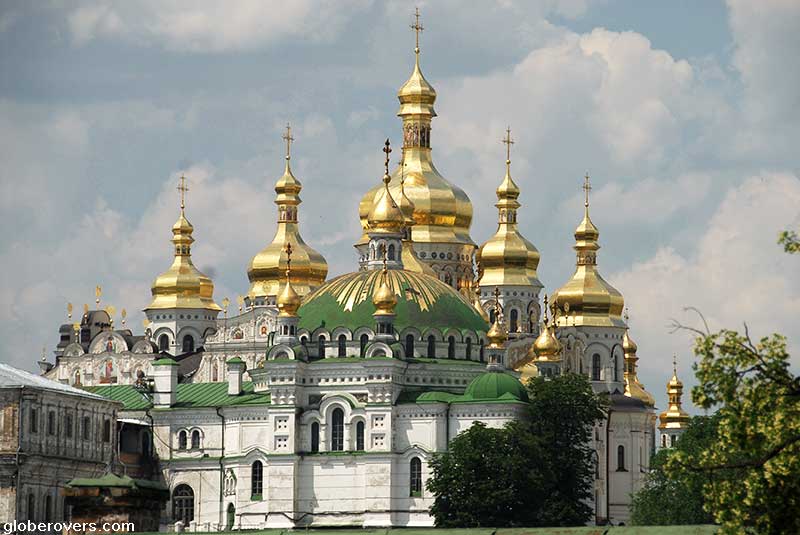

Founded during the times of Kievan Rus (1051 AD), the monastery has remained a major centre of Orthodox Christianity in the Slavic world.
In the underground passages of the “Lavra catacombs”, people come to worship the “imperishable relics of the most holy monks” displayed in wood and glass-lid coffins along the very narrow passages. There are dozens of these mummies and many have dark, dried-out, hands and feet sticking out from under their garments.
These saints are believed to have healing powers. People, including many clerics in long black robes and beards, walk with candles, kissing the feet of the mummies through the glass lids, and praying out loud. This is an experience no visitor who’s interested in the spiritual life should miss.
Take in the atmosphere and remember to be extremely discreet and respectful of the worshippers.
Onion-domed Orthodox cathedrals
If you’re into medieval onion-domed Orthodox cathedrals, you will have a wide choice to discover and explore in Kyiv.
Most of these buildings are still in use and visiting during a prayer service offers experiences you will treasure forever.
Across Kyiv, don’t miss St. Vladimir’s Cathedral, St. Sophia’s Cathedral, St. Michael’s Golden-Domed Monastery, the Pirogoshcha Church, St. Flor’s Convent, St. Andrews Church, and many cathedrals in the Cave Monastery including the Cathedral of the Domitian, Refectory Church (of St. Anthony and Feodosiy), and the awesome murals inside the Trinity Gate Church.


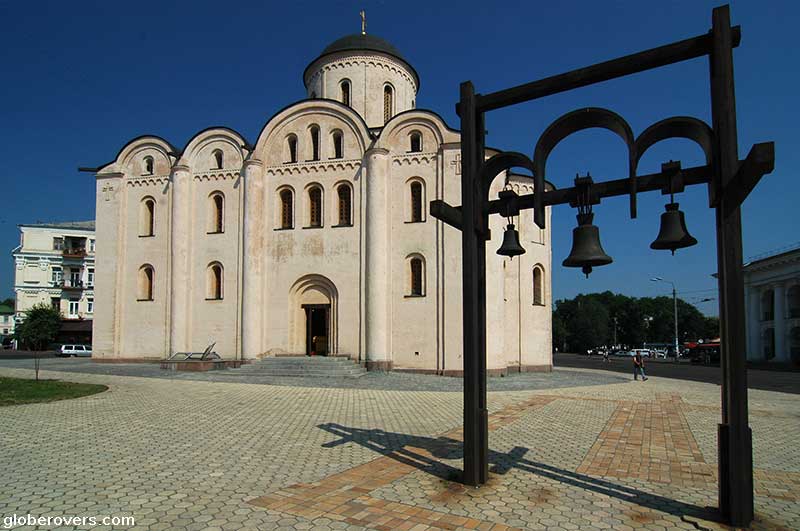
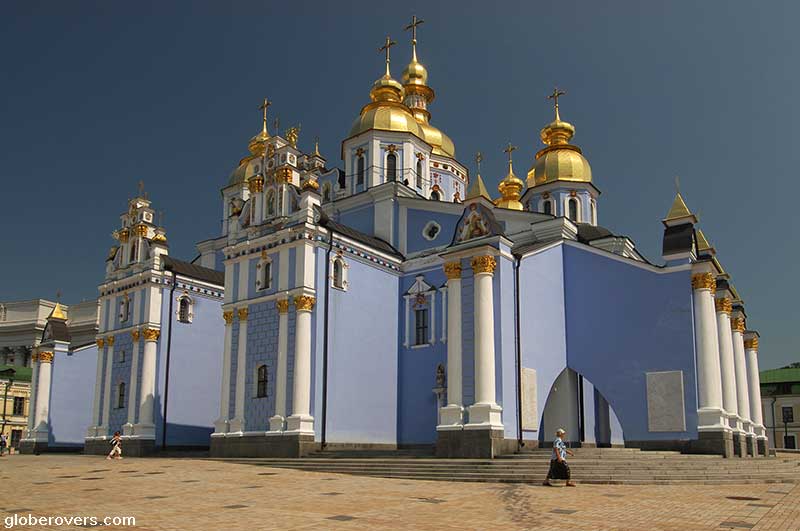

If you have time for only two: It must be the Ukrainian Baroque style St. Sofia’s Cathedral founded in the 11th century and rebuilt in the 17-18th centuries, and the Cave Monastery (Kyiv Pechersk Lavra).
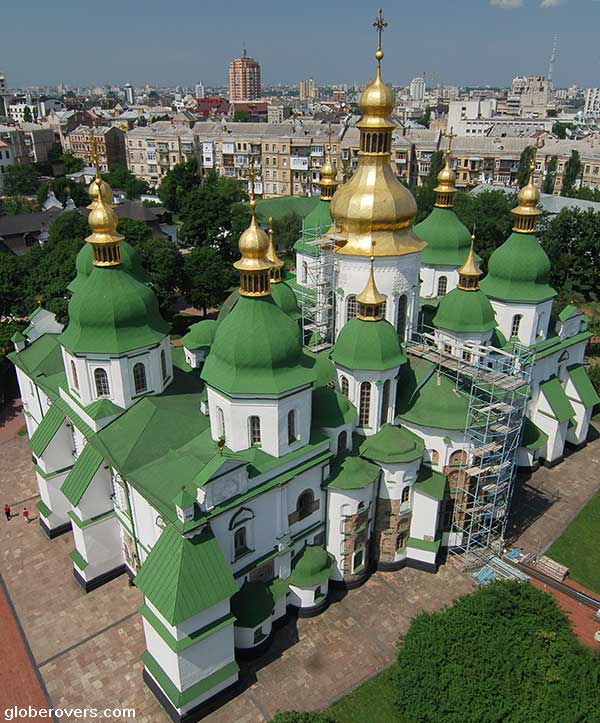
Theatres, museums and monuments
Kyiv is blessed with many baroque style theatres (in particular the National Opera Theatre) where opera, ballet, operettas, and other cultural and musical performances can be enjoyed at a ‘give-away’ ticket price.
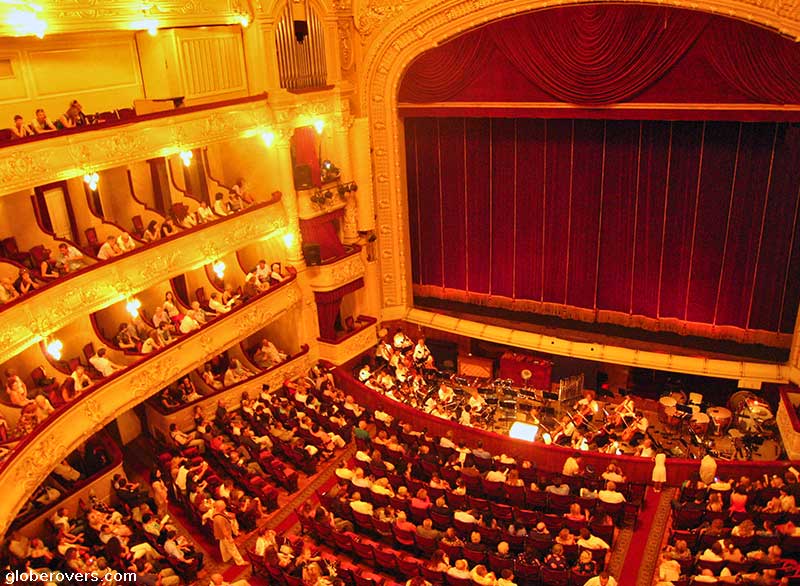
For those who want to seek out some exotic artefacts from the Soviet era such as the typical Stalinist colonnaded subway stations, massive bronze monuments, giant statues of Lenin and others, and elegant 20th-century buildings, you won’t be disappointed in Kyiv.
Visit the impressive Mikhail Bulgakov museum, the Chernobyl Museum, Mariinsky Palace built in 1752–55, and several other smaller museums and quaint galleries as well.
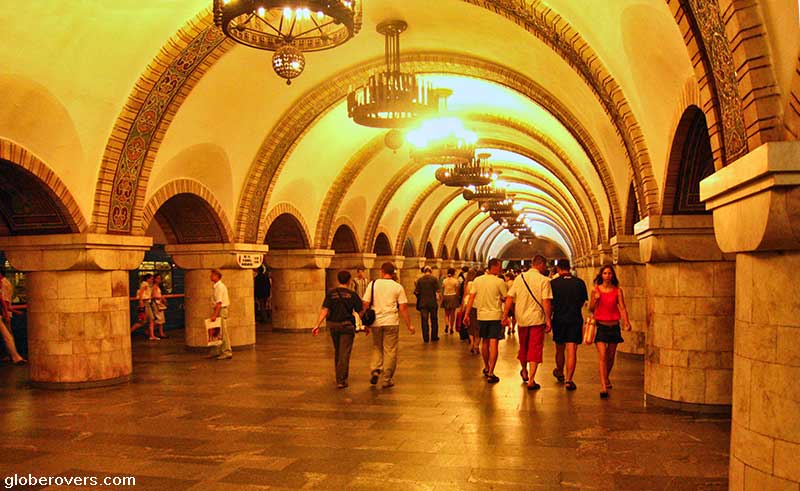
Ukrainian food and vodka!
Several restaurants serve traditional Ukrainian meals with typical Russian and Ukrainian dishes. Make sure not to miss the borsch (cold beet soup) and the varenyky dumplings with cabbage, potatoes or meat.
Vodka should be your friend and if not yet, you will be introduced daily to the locally distilled and very affordable horilka (vodka) which comes in at least fifty different brands.
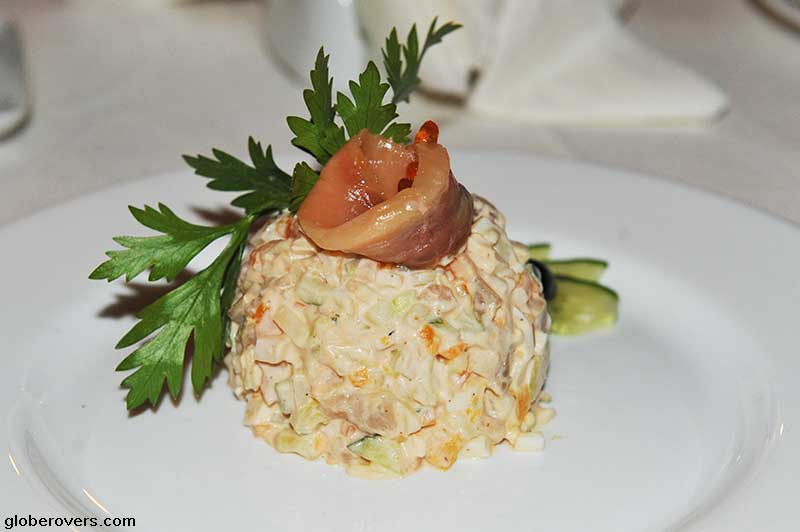

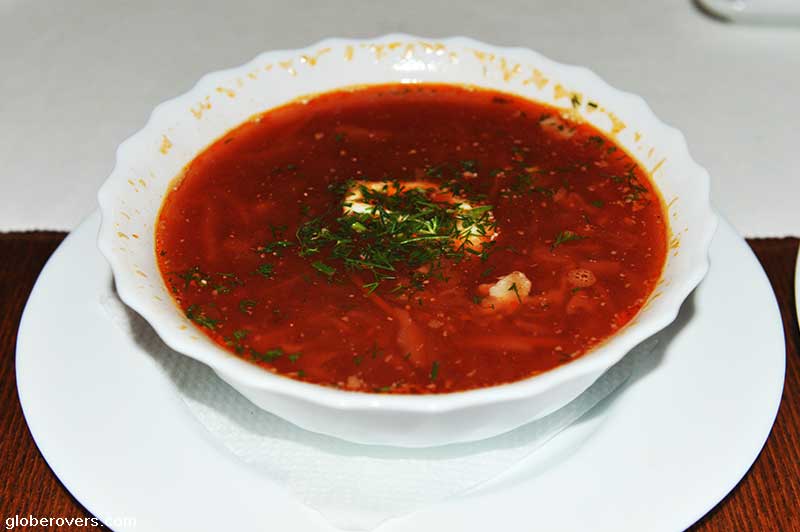
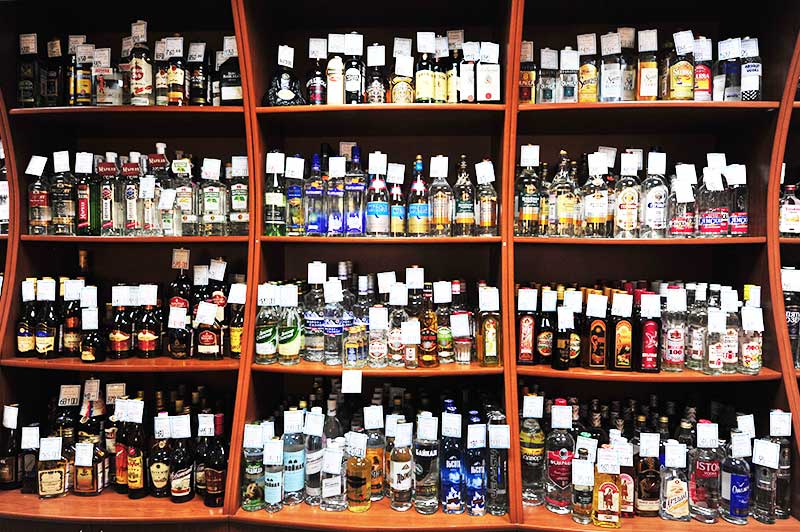
Ukraine’s Mother Motherland
Before you head for the border and wave goodbye to Ukraine’s Mother Motherland (Rodina-mat), the 200-foot-tall giant steel statue of a woman with a sword and shield in her hands, stock up on a few bottles of horilka.
Your new friends in the neighbouring countries will gladly accept a bottle of Ukraine’s best. Say “Bye” to Ukraine’s Mother Motherland as she will protect you on your travels.
If you venture through nearby Tblisi (Georgia) and Yerevan (Armenia), you’ll encounter her two sisters.
Essential Information
Tourist Visas
No visa is required for citizens of most Western and selected Asia-Pacific countries who stay for less than 90 days. Check for changes!
How to get there
Several airlines fly directly into Kyiv from selected European and North American cities. Daily trains make a long journey from Eastern European neighbours mainly via the Moscow bound lines.
Getting around
For non-Russian or Ukrainian speakers, the best option is by foot and by underground train. The underground is efficient, extensive, and with some creative guessing, you will arrive at your destination. Try to avoid taxis which need some up-front bargaining and you as a foreign tourist will likely be on the losing end.
Language
Your only hope of communication in English is with the younger generation. Russian and Ukrainian are widely spoken. Most, if not all, of the street signs are in Cyrillic characters so make sure to learn the basics before arriving.
Safety
While there are more dodgy clusters of people than dodgy areas, it is better not to explore the unknown late at night or with any obvious wealth displayed.
☛ Read more: Blog posts of Eastern Europe & Russia

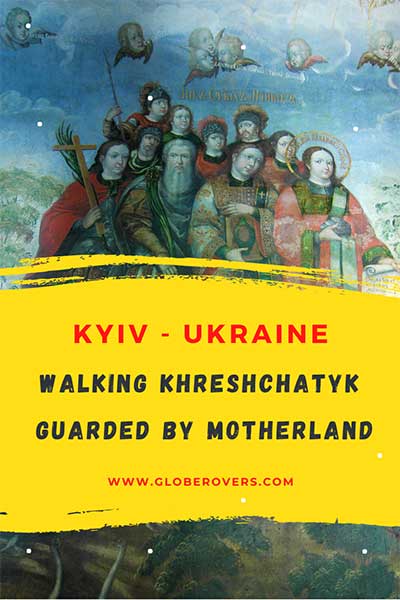
Further reading

Blog post and photos by Peter who has been travelling almost full-time since 2005 and has been to over 122 countries. He visited several countries, such as Japan, more than 20 times. Peter is Editor-in-Chief and Publisher of GlobeRovers Magazine, an independent travel magazine focused on intrepid destinations.

